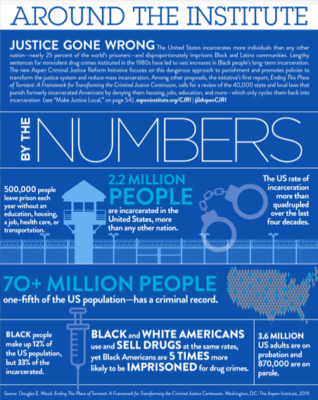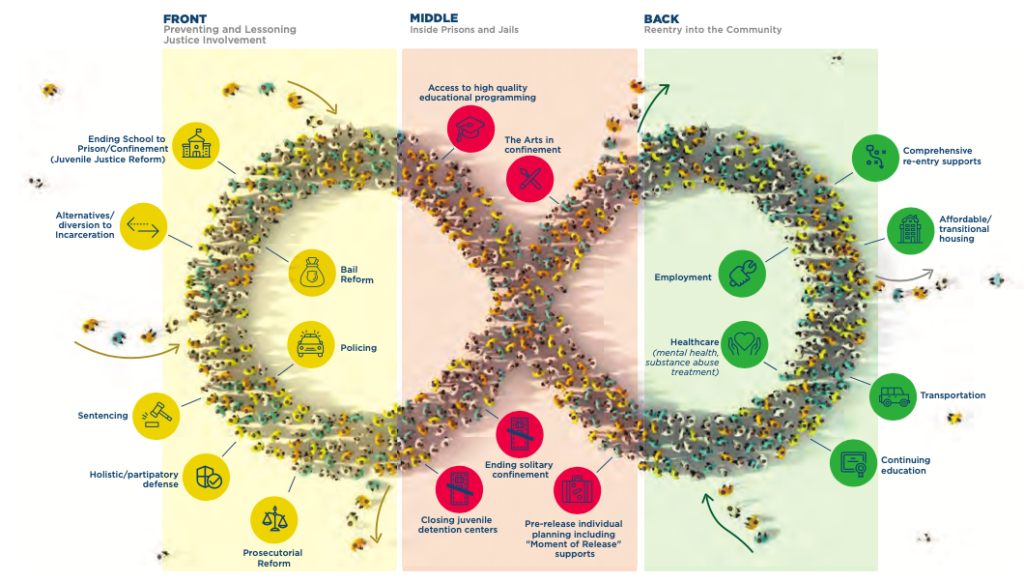CJRI Justice Continuum
The Criminal Justice Continuum
 There is a criminal justice crisis in the US, and the numbers are stark:
There is a criminal justice crisis in the US, and the numbers are stark:
- — 2.2 million people in the U.S. are incarcerated;
- — Housing nearly twenty-five percent of the world’s prisoners, the United States incarcerates more individuals than any other nation.
- — One-fifth of the U.S. population (over 70 million people) has a criminal record; and
- — Nearly 6.7 million adults are under some form of correctional control including 3.6 million on probation and 870,000 on parole.
Undergirding these facts is the long-term history of structural racism that has disproportionately impacted people of color, low- income individuals and underserved communities in spatial concentrations of incarceration and poverty.
Over 40,000 state laws lay out barriers to employment, housing, voting, and education for those that have been involved in the justice system. In addition, a myriad of other obstacles contributes to stigmatization and second-class status for returning citizens. Our broken pretrial apparatus results in many with bails too high for them to pay thus leaving them to languish in jails and prisons.
The criminal justice continuum is multifaceted and disjointed, but must be thought of as one system in order to make significant, lasting change. Our approach breaks the continuum into three segments, and identifies 18 inter-related areas in need of reform:

For further explanation of the criminal justice continuum, and more detailed information on the reforms needed, as well as the importance of focusing on how poverty and returning citizens are spatially focused in specific neighborhoods in the US, please see our foundational report Ending This Place of Torment: a framework for transforming the criminal justice continuum.
Being aware of the continuum is the start of the process of changing the system. CJRI’s work will include launching Justice and Governance Partnerships in 10 communities, starting in 2021, to take a deep dive with community partners to understand the local justice ecosystem, and how data can be used to change local policies. Learn more about our program work.
